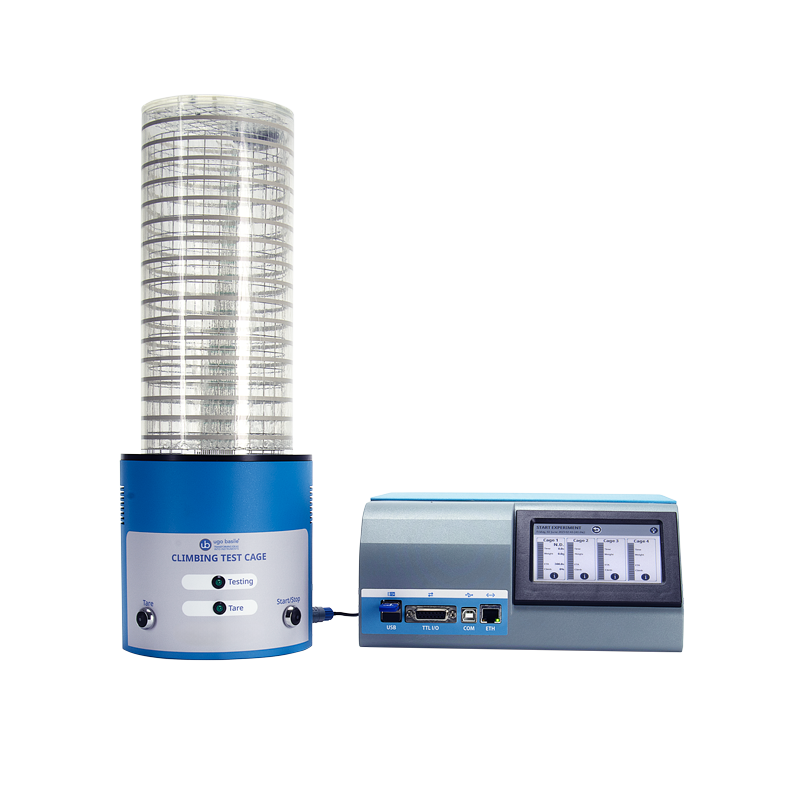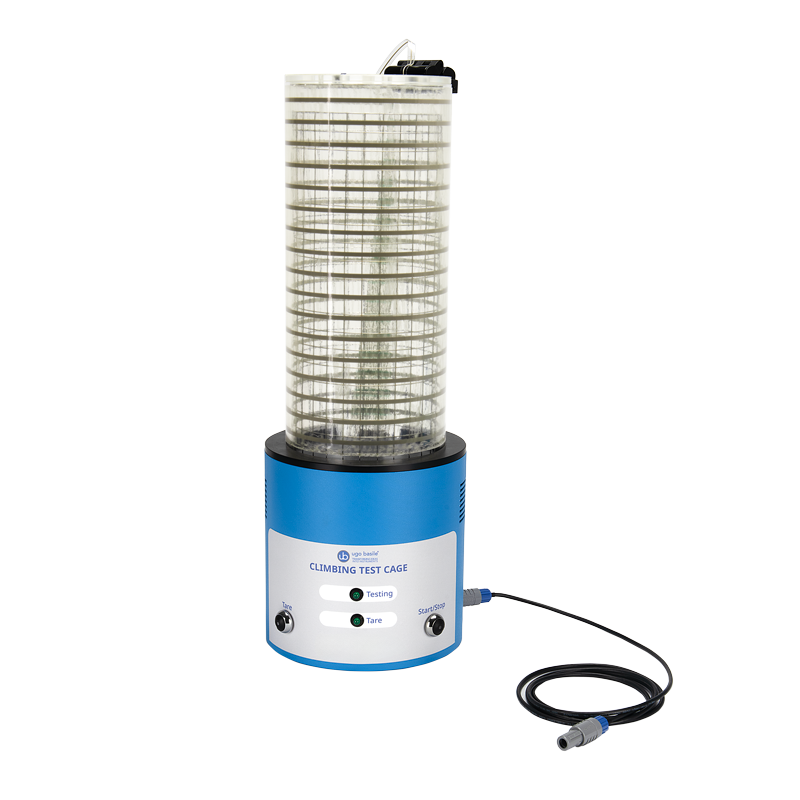Please specify the quantity of product(s).







Ugo Basile Mouse Climbing Test
A novel method to measure vertical movement in rodents
Climbing behavior can be of interest for the most diverse applications.
The Ugo Basile automated system replicates its first manual application in the Pain field, for measuring Pain-Depressed behavior. It showed that, while mild analgesics
block pain-depressed climbing, strong analgesics fail to alleviate depression of climbing (Santos et al. 2023, “Climbing behavior by mice as an endpoint for preclinical
assessment of drug effects in the absence and presence of pain”, Frontiers).
A load cell underneath the aluminum base (diameter 12 cm) provides the automated start of the test once the animal leaves the base and starts climbing over the cylinder (height 25.5 cm) and its ceiling, thanks to the 5x5mm internal grid. The system is composed of a 4-channel electronic unit to connect up to 4 climbing
cylinders. The output parameters, stored in the electronic unit and exportable in Excel, include the %climbing, the number and duration of climbing episodes, the climbing time, the maximum and average climbing height and the total activity while climbing.
Example of how the experiment is displayed on the touchscreen
Aluminium circular base close up
The device, developed in collaboration with the laboratory of Prof. Sidney Neegus from Virginia Commonwealth University, provides a measurement of the vertical movement of rodents, a parameter which has not been widely investigated so far, in spite of the fact that rodents are animals that live in a 3D space and hence the analysis of XY position only is a limitation in many current studies.
However, climbing behavior and vertical movements have been previously studied in non-automated experiments to investigate many fields, from muscle strength (Ueno et al. 2022), to antidepressants (Perona et al. 2008), stroke (Jin et al., 2017), Parkinson’s (Sundstrom et al., 1990), sex-differences (Borbelyova et al., 2019),
locomotor activity and kinematics (Green et al., 2012), neuroleptics and dopamine agonists (Costall et al., 1982; Pinsky et al., 1988; Medvedev et al., 2013), XYZ activity (Wexler et al. 2018), opioid receptors (Michael-Titus et al., 1989), neuropathic and cancer pain (Falk et al., 2017). The Ugo Basile Climbing System aims to provide
a simple and automated tool to measure vertical climbing movements within a grid cylinder to inform all the scientists that are interested in this crucial parameter for their research.
Certain diseases and conditions affec rodents’ climbing abilities. For example, neurodegenerative disorders can impair their motor skills and climbing behavior.
Researchers use these changes in climbing behavior to study and test potential treatments for such diseases. In summary, climbing behavior in rats and mice
is not just a simple activity but a multifaceted aspect of their biology with implications for their well-being, natural behavior, and various fields of research.
It provides valuable insights into their physiology, behavior, and responses to environmental and genetic factors, making it an essential component of biological and biomedical studies involving these rodents.
• Ethological Perspective: climbing is a natural behavior in rats and mice in the wild. They use climbing to access food, escape from predators, explore their environment, and find shelter. Studying climbing behavior allows researchers to gain insights into their natural habitat and evolutionary adaptations.
• Behavior and Physiology: climbing behavior reflects the rodents’ muscular and skeletal capabilities. It involves coordination, strength, and agility. Understanding their climbing abilities can provide insights into their neuromuscular systems, balance, and sensory perception.
• Environmental Enrichment: in laboratory settings, providing opportunities for climbing is an important aspect of environmental enrichment. Rats and mice kept in captivity benefit from a stimulating environment that mimics their natural habitat. Climbing structures in cages promote physical and mental exercise, reducing stress and improving overall well-being.
• Research Models: rats and mice are commonly used as model organisms in biomedical research. Their climbing behavior can be relevant to various research areas,
including neuroscience (study of motor skills and balance), behavior (exploring effects of drugs or genetic modifications), and psychology (studying spatial cognition and
learning).
• Disease Models: from stroke to depression, anxiety, skeletomuscular performance, Parkinson’s, pain, neuropathic pain and cancer pain.
Features
- Conductive sensors to track Z movements
- Load cell floor
- 4 Channel electronic unit
- USB and LAN data saving
Benefits
- Automated start of the test
- Automated measurement of time climbing, distance travelled, time on ceiling, climbing episodes
- Up to four measuring cylinders can be connected to one electronic unit for high throughput
- Easy export into excel and data security
